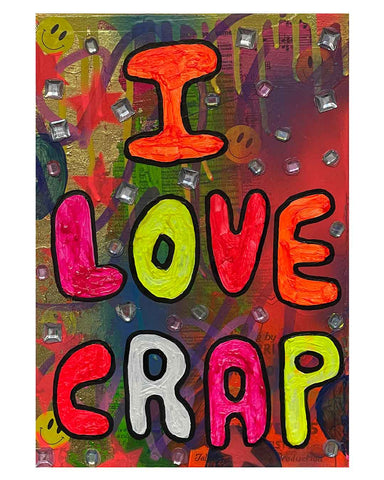4 Reasons Why Art Makes the Perfect Gift. In a world when there are countless things one may obtain as gifts, giving the gift of art has a timeless and incredibly meaningful quality. A wonderful and meaningful way to commemorate life’s milestones, convey thanks, and demonstrate affection and admiration for people is via art. Through art, we can access a part of ourselves that is inherently gifted—a natural sense of harmony, feeling, or admiration. One of the few gift options that never goes out of style is art. The pricey clothes, the perfume, and the high-end phone you gave will all run out and become outdated in twenty years, but the art you gave? That will continue to be on show on mantles and walls. It will provoke the same spectrum of feelings and thoughts that it does at this time.
Personal Expression and Meaning
Art has a profound sense of meaning and personal expression. Art has the ability to deeply connect with people, whether it's through a sculpture that speaks to their experiences in life or a painting that features their favourite colours. The care with which you choose an artwork that complements the recipient's preferences and passions demonstrates that you have given meaningful gift-giving some serious thought. Empirical data supports the major implications of the claim that one’s moral awareness can be deepened by engagement with the arts through the development of empathy towards others. This idea has served as the foundation for a number of arts-based gifts.
Timeless and Lasting
Over time, many presents may become antiquated or lose their attractiveness, but art is ageless and lasts for many generations. The idea that art is a gift contradicts the notion that artistic merit should be correlated with financial success and emphasises the non-remunerative nature of artistic labour. In the end, appreciating art as a gift forces us to reconsider how we value and create artistic expression. Not two paintings are the same, even though they are by the same artist. Giving someone a painting is like offering them this unique experience, exclusivity. It's the awareness that they alone are the owners of this unique piece of art; the unique fusion of ideas, hues, and aesthetics that produced this particular artwork. Giving someone a painting is like giving them their own little piece of the globe. Art has the power to stir up feelings and memories long after the event has past, whether it is publicly displayed in a house or place of business. This time, your gift will undoubtedly appeal to the recipient on an emotional level, but you will also feel good about the idea that, in contrast to other presents, its worth will only increase with time.
Versatility and Variety
The diversity and adaptability of art is one of its many wonderful qualities. There is a vast array of styles, mediums, and artists available to accommodate every taste and desire. For example, take into consideration the cultural practice of portraiture, which is a type of painting in which a human subject is primarily shown, usually with the face in focus. Over the years, this practice has persisted in many communities, changing and being impacted by the ethical, cultural, and economic values of various socioeconomic groupings as well as by artistic movements and technical developments in these places. "Creating a portrait" complies with the genre's established conventions, expectations, and standards, which are fundamentally community. Moreover, these conventions and guidelines function as reference points for evaluating the calibre of a portrait. Basically, people can deliberate and debate whether or not a particular piece of art is a good portrait. This even extends to society at large. Furthermore, only through the practice of portraiture can one achieve such accomplishments as "mastering the portrayal of complex emotional expressions in a two-dimensional medium" (as demonstrated by Leonardo DaVinci's Mona Lisa) or "effectively conveying the harshness of poverty and the dignity of impoverished individuals by portraying their humanity with sympathy and beauty" (as demonstrated by Dorothea Lange's Migrant Mother). There's sure to be an artwork that speaks to the receiver, regardless of whether they enjoy traditional landscapes, modern abstract art, or whimsical sculptures.
Supporting Artists and Creativity
Giving an artwork as a gift not only makes the receiver happy, but it also helps artists and makers. Buying art is a crucial way for people to assist artists, who often struggle to support themselves financially from their creations. The growing use of the arts in medical education to foster empathy for others as well as self-awareness is particularly notable. People frequently inadvertently imitate the artist's movements when interacting with art; examples include stippling when looking at paintings by Georges Seurat or using larger strokes when looking at paintings by Vincent Van Gogh. Interestingly, research has revealed that participants' preferences for the artworks were impacted when their movements were altered to either match or deviate from the painting style. You can support a thriving creative community and guarantee that artists may follow their passion by making investments in the arts.
Even if we might not be as talented as the creator, we can still use the artist's creation to acknowledge and accept the gifts within ourselves. We are lucky to have had this experience and feel enriched by it, appreciating the artist's hard work in sharing their abilities with the world. Even while the audience perceives it as such and it embodies the essence of the artist's gift, it is not by nature a gift unto itself. Whether a piece of art is regarded as a sacred treasure or as a commodity to be sold can have an impact on its nature. Art is the ideal present for any occasion because of its capacity to support artists, personal expression, ageless appeal, and adaptability.
Please get in contact regarding more information about my artwork.





